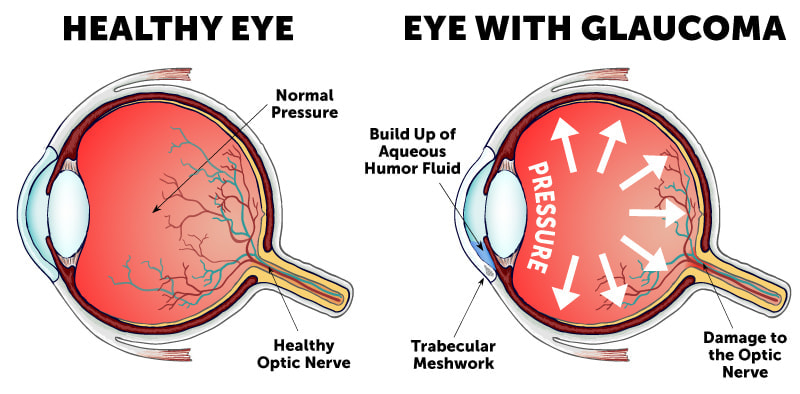Recognizing the Different Vision Modification Procedures Available for Clearer Sight
In the realm of vision improvement procedures, a wide range of choices exist to deal with refractive mistakes and supply people with clearer view. Let's discover the complexities of these procedures and lost light on the course to achieving improved vision clearness.
LASIK Surgical Treatment
LASIK surgery is an usual refractive treatment made use of to deal with vision problems such as nearsightedness, farsightedness, and astigmatism. This medical strategy, which stands for Laser-Assisted in Situ Keratomileusis, aims to reshape the cornea to boost how light is concentrated on the retina, inevitably boosting vision quality.
One of the key benefits of LASIK surgical procedure is the quick improvement in vision experienced by patients. In general, LASIK surgical treatment is a preferred option for people seeking a long-lasting service for their vision troubles.
PRK Treatment
While additionally an usual refractive procedure, the PRK (Photorefractive Keratectomy) technique varies from LASIK surgical treatment in its approach to fixing vision problems. In PRK, as opposed to developing a flap on the cornea, the outer layer of the cornea, called the epithelium, is entirely gotten rid of. This enables the laser to improve the cornea to fix refractive mistakes such as astigmatism, farsightedness, and nearsightedness directly on the surface area.

In spite of the longer healing time, PRK can generate excellent outcomes in vision enhancement, making it a valuable option for those that might not be ideal candidates for LASIK surgery.
Implantable Lenses
Unlike PRK where the cornea is reshaped directly, implantable lenses provide another method for correcting vision by placing man-made lenses inside the eye. This procedure is particularly valuable for people with high degrees of astigmatism, nearsightedness, or farsightedness that might not appropriate prospects for laser surgeries like LASIK or PRK.
Implantable lenses, additionally referred to as phakic intraocular lenses, work by supplementing the eye's natural lens with a man-made one. retina service near me. These lenses can be put before the all-natural lens (former chamber) or behind the iris and before the all-natural lens (posterior chamber) By changing the power and positioning of these lenses, ophthalmologists can properly remedy refractive mistakes and boost aesthetic acuity
One benefit of implantable lenses is that they are removable and exchangeable, providing adaptability for future changes. Nonetheless, similar to any kind of medical treatment, there are threats included, such as infection or cataract development. Clients taking into consideration implantable lenses must speak with an eye treatment professional to identify the most appropriate choice based on their private requirements and eye health.
Corneal Rings
Corneal rings, likewise known as intracorneal ring segments, are tiny, transparent tools placed into the cornea to remedy vision distortions such as keratoconus. Keratoconus is a condition where the cornea thins and protrudes outward, causing vision to become altered. The insertion of corneal rings helps to flatten the cornea, enhancing aesthetic acuity and lowering the uneven astigmatism triggered by keratoconus.
The procedure for putting corneal rings is minimally intrusive and relatively quick, often carried out as an outpatient procedure. During the surgical treatment, the ophthalmologist makes a little cut in the cornea and inserts the rings at a particular depth. As soon as in position, the rings help to improve the cornea, supplying a smoother surface for light to go into the eye, which can result my explanation in clearer vision.
Corneal rings are considered a reversible procedure, as they can be removed or changed if required. eyecare near me. While they might not completely remove the requirement for glasses or contact lenses, corneal rings can substantially improve vision top quality and overall visual convenience for individuals with keratoconus or various other corneal abnormalities
Refractive Lens Exchange
Following the adjustment of corneal irregularities with procedures like corneal rings, another vision adjustment strategy that can address refractive errors is Refractive Lens Exchange (RLE) RLE is an operation that entails changing the eye's natural lens with a man-made intraocular lens (IOL) to deal with refractive mistakes such as nearsightedness, presbyopia, and farsightedness. This treatment is specifically advantageous for individuals that may not appropriate candidates for treatments like LASIK or PRK as a result of variables such as thin corneas or high refractive errors.

Final Thought
Finally, there are various vision improvement procedures available to assist individuals achieve more clear sight. LASIK surgical procedure, PRK procedure, implantable lenses, corneal rings, and refractive lens exchange are all choices that can address different vision concerns. It is very important for individuals to speak with their eye treatment copyright to establish one of the most suitable procedure based upon their specific requirements and article preferences. With innovations in modern technology, achieving enhanced vision is currently extra available than ever in the past.
In the realm of vision improvement procedures, a wide variety of alternatives exist to address refractive mistakes and supply individuals with clearer sight.LASIK surgical treatment is an usual refractive procedure used to correct vision troubles such as nearsightedness, farsightedness, and astigmatism.While also a typical refractive procedure, the PRK (Photorefractive Keratectomy) strategy varies from LASIK surgery in its strategy to remedying vision problems.Complying with the investigate this site improvement of corneal abnormalities with procedures like corneal rings, another vision improvement method that can deal with refractive mistakes is Refractive Lens Exchange (RLE) LASIK surgical procedure, PRK procedure, implantable lenses, corneal rings, and refractive lens exchange are all options that can attend to different vision problems.